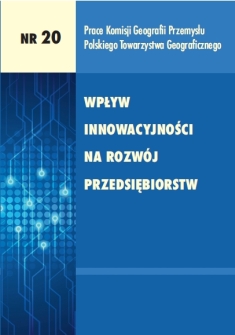Personification of genius loci – innovations on the base of geographical identity
DOI:
https://doi.org/10.24917/20801653.20.2Keywords:
innovations, genius lociAbstract
Innovative development of a place is necessary associated with the individual positioning of the place. Europe consists of more than 100 thousand competing territorial units, which need to attract the potential consumers by means of creating a bright and actual image. Without having the unique, characteristic image, a potentially attractive place can remain unnoticed on the enormous European location market.The objective of this research is improving our understanding of a place image and its influence on competitiveness of the location. Over the last decades, the emotional essence of place image has made considerable impact on economic and demographic development of places. This project will allow us to study quantitatively the increasing value of a place image as determinative of its appeal. Our project, thus, aspires to improve measurements of features of a place image for the purpose of management on the level of location attractiveness.The research into and expression of geographical identity of a place is convenient to carry out, using the image of a Dragon as the personification of «genius loci». The methodology is confirmed on the example of a number of cities in the southeast area of Bulgaria.Downloads
Metrics
References
Izard C., 1991, The Psychology of Emotions, Plenum Press, New York.
Kotler P., Asplund C., Rein I. & Haider D., 1999, Marketing Places Europe: How to Attract Investments, Industries, Residents and Visitors to Cities, Communities, Regions and Nations in Europe, Financial Times Prentice Hall, London; 2nd edition.
Kotler P., Jatusripitak S., Maesincee S., 1997, The Marketing of Nations. A Strategic Approach to Building National Wealth, The Free Press, New York.
Lidin K., Sumenkova M. Competitiveness and the emotional essence of the region image. In: Proceedings of the 26th International Scientific Conference on “Impact of Crisis on the Activity of Enterprises and Changes in the Spatial Structures of Industry and Services” edited by Zbigniew
Zioło and Monika Borowiec, Warsaw–Cracow 2010 – pp. 37–50.
Lidin K., Quantitative measurements in the market of emotions. In: Proceedings of the IV World Congress on Communication and Arts – WCCA’2011. “Interactive Expansion of Knowledge: Communicating with Art in the Information Era”, São Paulo in Brazil, 17–20 April 2011.
Mackenzie Presbyterian University Publishers, vol. 2, pp. 137–144.
Tuan Yi-Fu, 1974, Topophilia (a study of environmental perception, attitudes, and values), Prentice Hall, Englewood Cliffs, NJ.
Tuan Yi-Fu, 2004, Place, Art, and Self, University of Virginia Press, Santa Fe, NM, in association with Columbia College, Chicago, IL.
Лидин К.Л. Город-пациент. К исследованиям эмоциональной атмосферы городов // Проект Байкал/Project Baikal, № 29–30, 2011. Pp. 33–36.
Рагулина М.В., 2004, Культурная география: теории, методы, региональный синтез, Иркутск: Изд-во Института географии СО РАН.
Щукин В.Г. Заветное «где». Топофилия и методы ее исследования // Вопросы философии. 2008. № 4. Pp. 69–90.
Замятин Д.Н., Замятина Н.Ю., Митин И.И. Моделирование образов историко-культурной территории: методологические и теоретические подходы – М.: Институт наследия, 2008. – p. 760.
Downloads
Published
How to Cite
Issue
Section
License
Articles are published under the terms of the Creative Commons License (CC BY-ND 4.0; Attribution– NoDerivs).

